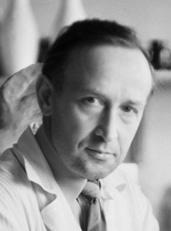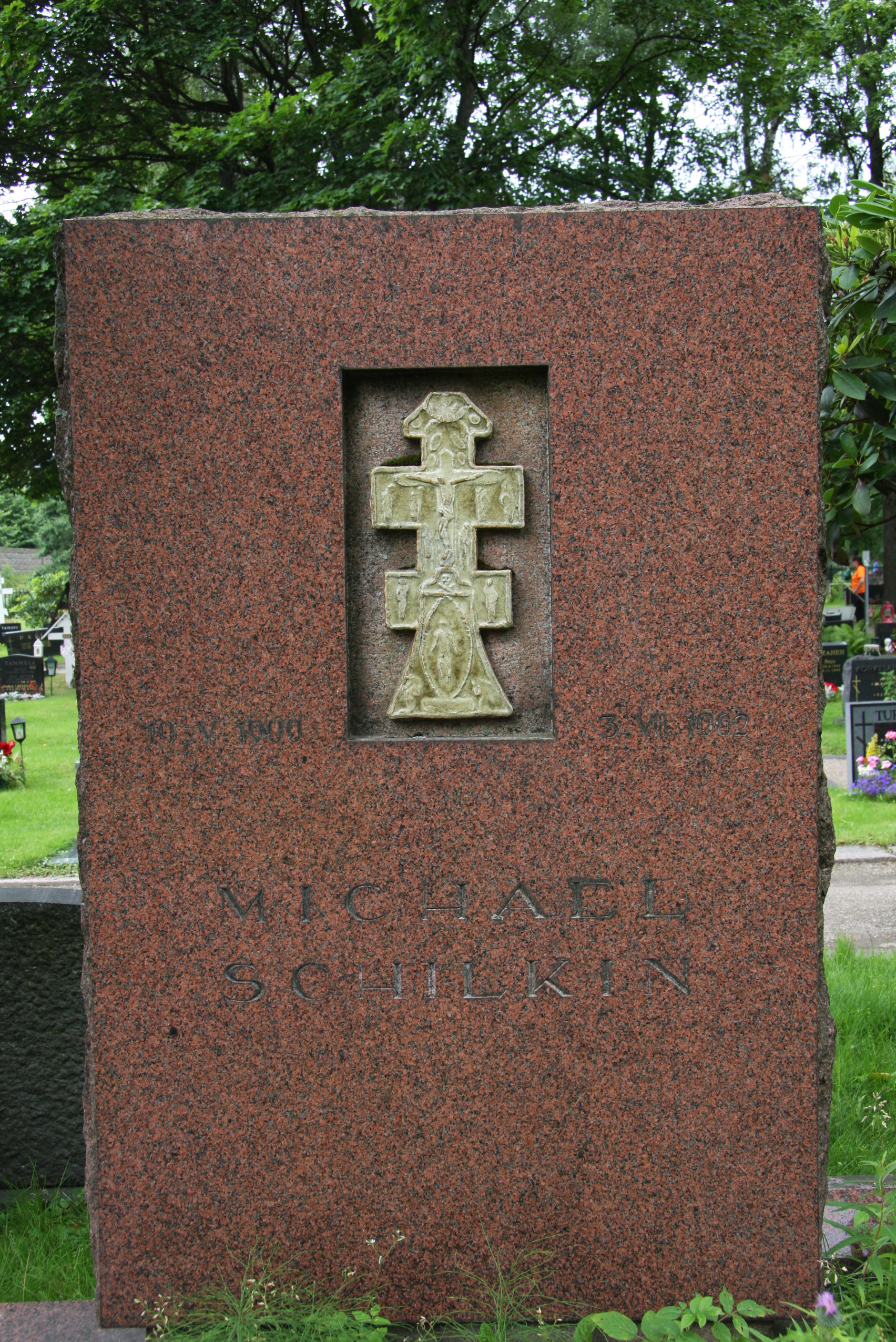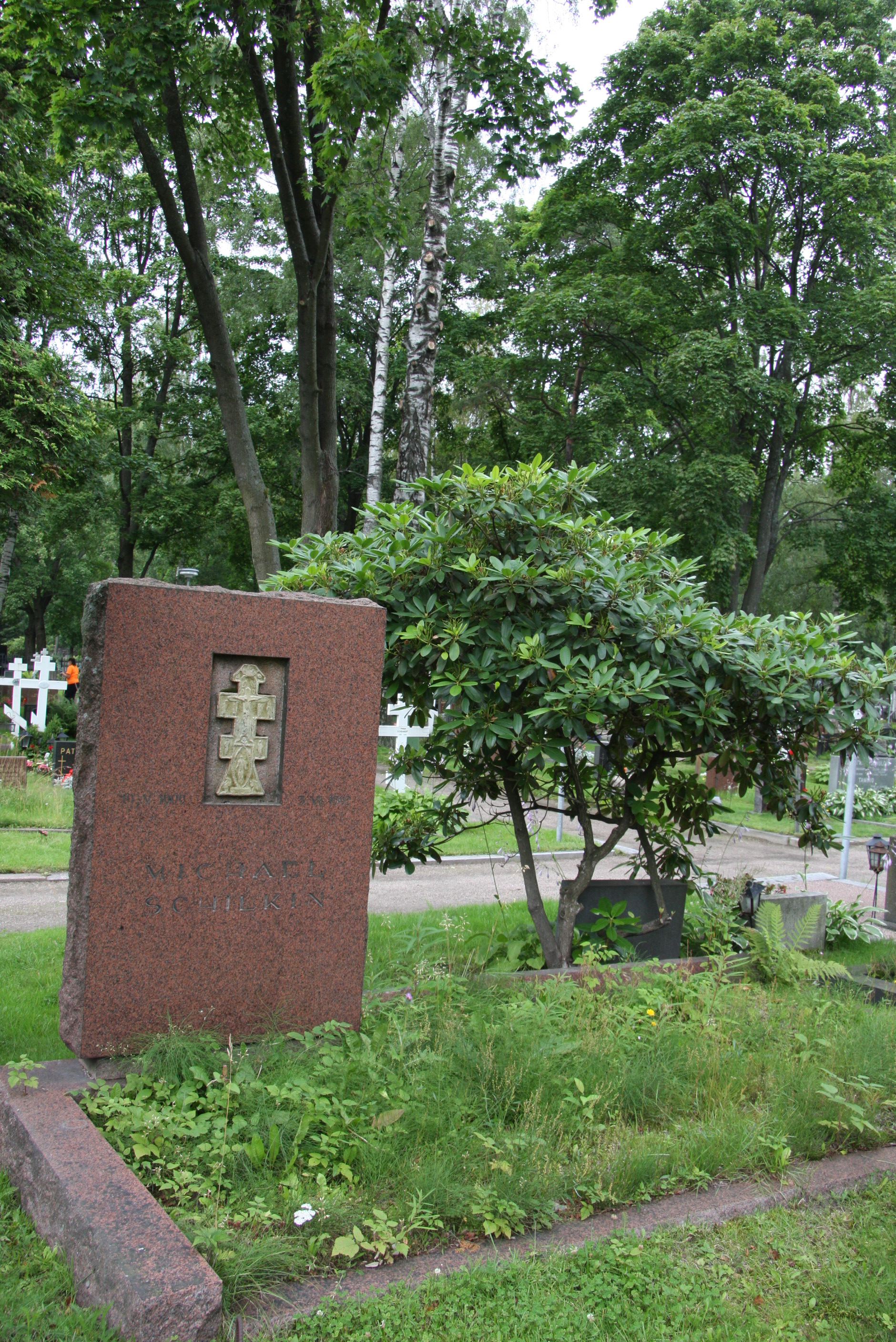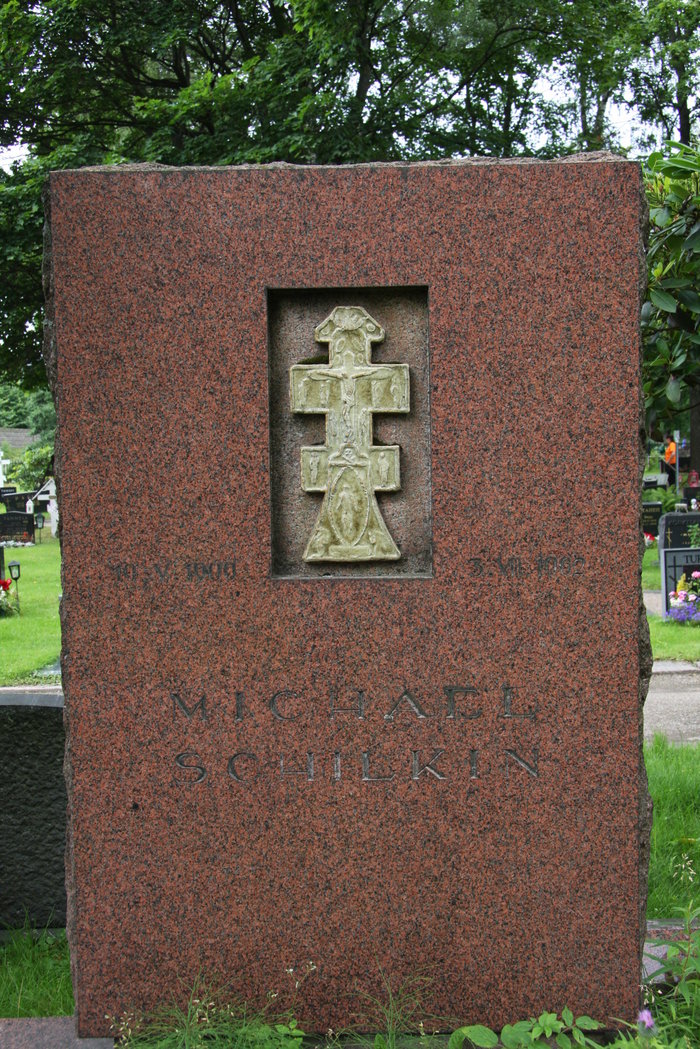Keraamikko (Ceramist)∼Sculptor and ceramist. The son of a railroad employee. The seven years of schooling, he worked in the printing, the evening was engaged in drawing school. In the summer of 1921, during the voyage of amateur sailing on Lake Ladoga, crashed and ended up on the Finnish coast. In Russia, did not return, was a refugee passport. In 1922-1927 he studied at the sculpture department of the Central School of Art and Design in Helsinki. He worked as a driver, and in free time, he was devoted to art. He created small sculptures of mythological and biblical subjects, "Sabine Women Rape», «Pieta», etc. In 1933 became one of the organizers of the Society of Russian artists in Finland, participated in its annual exhibitions (at the 4th exhibition of the society in 1937 showed the bust of Pushkin created for the 100th anniversary of the death of the poet). In 1935, at the exhibition of the society received 1st prize for sculpture "Samson and Delilah." In 1937, he went to the ceramic factory, and porcelain "Arabs", where he worked until his death. With the assistance of the Directorate received Finnish citizenship and was sent to Paris to represent the factory at the International Exhibition of Art and Industry (1937 Gold Medal). In 1939-1940 fought in the Finnish army, after the war he returned to creativity. Produced several monumental reliefs majolica portals buildings in Helsinki factory "Arab" (1943-1944), a candy factory "phaser" (1943), City Hall (1946), the Higher School of Economics and Management (1947-1952), St. Hospital. Mary (1954). Donated was five ceramic reliefs for the facade of the Church of Elijah the Prophet in the Orthodox cemetery in Helsinki (architect I. Kudryavtsev). In 1947 created about thirty signature product for the Royal Porcelain Factory in Copenhagen, developed samples for lottery dishes. In 1951 he traveled to South America to learn the art of the ancient Incas, which had an impact on his later work. In the 1950s, created the stylized figures of birds and animals.∼Michael Schilkin was a Russian-born ceramist who is best known for having worked in the art department of Arabia. Schilkin was born in Trubino, Russia and lived in Torzhok. In his youth, he worked as a tailor in Saint Petersburg, as a clerk in a railway station in Leningrad, and in 1917 following the Russian Revolution, as a sailor on a yacht, and then as a stone cutter in Helsinki, Finland. In 1921, while sailing with a local sailing club on Lake Ladoga, Schilkin accidentally crossed the Finnish border. The team was arrested by the border guard and subsequently released. After this incident, Schilkin moved to Mikkeli and found work on a farm. Research shows that Schilkin studied at Aalto University School of Arts, Design and Architecture in Finland and was active as an artist from 1935 until his death. His Finnish citizenship was obtained in 1937 with the help of sculptor Wäinö Aaltonen and in 1958 he received the Pro Finlandia medal. Schilkin worked as a ceramist and created small sculptures and figurines by mixing different kinds of glass with other materials and was known for his use of strong colors.
Keraamikko (Ceramist)∼Sculptor and ceramist. The son of a railroad employee. The seven years of schooling, he worked in the printing, the evening was engaged in drawing school. In the summer of 1921, during the voyage of amateur sailing on Lake Ladoga, crashed and ended up on the Finnish coast. In Russia, did not return, was a refugee passport. In 1922-1927 he studied at the sculpture department of the Central School of Art and Design in Helsinki. He worked as a driver, and in free time, he was devoted to art. He created small sculptures of mythological and biblical subjects, "Sabine Women Rape», «Pieta», etc. In 1933 became one of the organizers of the Society of Russian artists in Finland, participated in its annual exhibitions (at the 4th exhibition of the society in 1937 showed the bust of Pushkin created for the 100th anniversary of the death of the poet). In 1935, at the exhibition of the society received 1st prize for sculpture "Samson and Delilah." In 1937, he went to the ceramic factory, and porcelain "Arabs", where he worked until his death. With the assistance of the Directorate received Finnish citizenship and was sent to Paris to represent the factory at the International Exhibition of Art and Industry (1937 Gold Medal). In 1939-1940 fought in the Finnish army, after the war he returned to creativity. Produced several monumental reliefs majolica portals buildings in Helsinki factory "Arab" (1943-1944), a candy factory "phaser" (1943), City Hall (1946), the Higher School of Economics and Management (1947-1952), St. Hospital. Mary (1954). Donated was five ceramic reliefs for the facade of the Church of Elijah the Prophet in the Orthodox cemetery in Helsinki (architect I. Kudryavtsev). In 1947 created about thirty signature product for the Royal Porcelain Factory in Copenhagen, developed samples for lottery dishes. In 1951 he traveled to South America to learn the art of the ancient Incas, which had an impact on his later work. In the 1950s, created the stylized figures of birds and animals.∼Michael Schilkin was a Russian-born ceramist who is best known for having worked in the art department of Arabia. Schilkin was born in Trubino, Russia and lived in Torzhok. In his youth, he worked as a tailor in Saint Petersburg, as a clerk in a railway station in Leningrad, and in 1917 following the Russian Revolution, as a sailor on a yacht, and then as a stone cutter in Helsinki, Finland. In 1921, while sailing with a local sailing club on Lake Ladoga, Schilkin accidentally crossed the Finnish border. The team was arrested by the border guard and subsequently released. After this incident, Schilkin moved to Mikkeli and found work on a farm. Research shows that Schilkin studied at Aalto University School of Arts, Design and Architecture in Finland and was active as an artist from 1935 until his death. His Finnish citizenship was obtained in 1937 with the help of sculptor Wäinö Aaltonen and in 1958 he received the Pro Finlandia medal. Schilkin worked as a ceramist and created small sculptures and figurines by mixing different kinds of glass with other materials and was known for his use of strong colors.
Sponsored by Ancestry
Advertisement
Explore more
Sponsored by Ancestry
Advertisement







